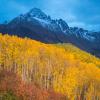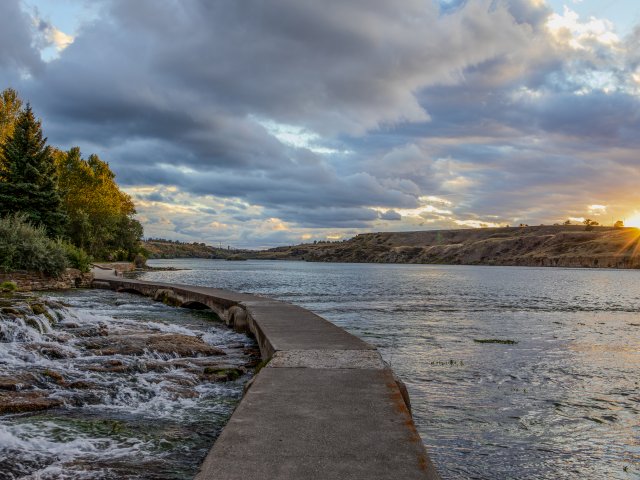Pictures for October 15th, 2025
Missouri River, Great Falls, Montana (Sunrises/Sunsets)
The Missouri River in Great Falls, Montana, is a significant and picturesque part of the region. The river is one of the longest in North America, originating in the Rocky Mountains of western Montana and flowing east and south for over 2,300 miles before joining the Mississippi River. In Great Falls, the river is particularly notable for the series of five waterfalls that give the city its name. These falls are named Black Eagle Falls, Colter Falls, Rainbow Falls, Crooked Falls, and the Great Falls, also known as Big Falls. The Great Falls area is rich in history and natural beauty. It played a crucial role in the Lewis and Clark Expedition, as the explorers had to portage around the falls, a challenging task that took them nearly a month. Today, the area is a popular destination for outdoor activities such as fishing, boating, and hiking. The River's Edge Trail offers scenic views and access to the river and its surroundings. In addition to its natural attractions, the Missouri River in Great Falls is also an important resource for the region, providing water for agriculture, industry, and recreation. The river and its falls have been harnessed for hydroelectric power, contributing to the area's energy supply. Overall, the Missouri River in Great Falls is a vital and cherished part of Montana's landscape and history.
Aspen Trees, Fishlake National Forest, Utah (Fall)
Aspen trees in Fishlake National Forest, Utah, are part of a remarkable natural phenomenon known as "Pando," which is Latin for "I spread." Pando is a massive clonal colony of quaking aspen (Populus tremuloides) that is considered one of the largest and oldest living organisms on Earth. Located in the Fishlake National Forest, this colony covers over 100 acres and consists of approximately 47,000 individual tree stems, all connected by a single root system. The aspen trees in this colony are genetically identical, having originated from a single seed thousands of years ago. The root system continually sends up new shoots, which grow into trees, allowing the colony to regenerate and spread over time. This unique characteristic makes Pando an extraordinary example of clonal growth and longevity in the plant kingdom. Aspen trees are known for their striking white bark and leaves that tremble or "quake" in the wind due to their flattened petioles. In the fall, the leaves turn a brilliant yellow, creating a stunning visual display that attracts visitors to the area. The Fishlake National Forest provides a beautiful setting for exploring this natural wonder, offering opportunities for hiking, photography, and enjoying the diverse wildlife and scenic landscapes of the region. Despite its resilience, Pando faces challenges from environmental changes, human activities, and grazing by deer and elk, which can hinder the growth of new shoots. Conservation efforts are ongoing to protect and preserve this unique and ancient organism for future generations to appreciate and study.
















